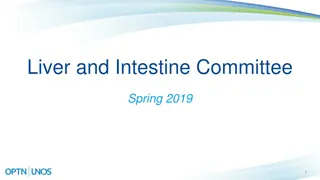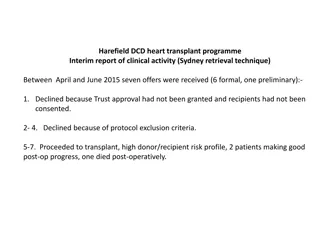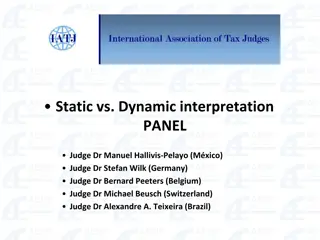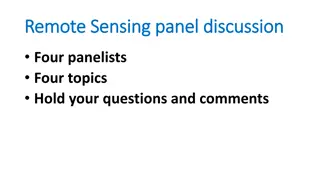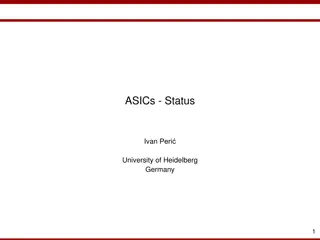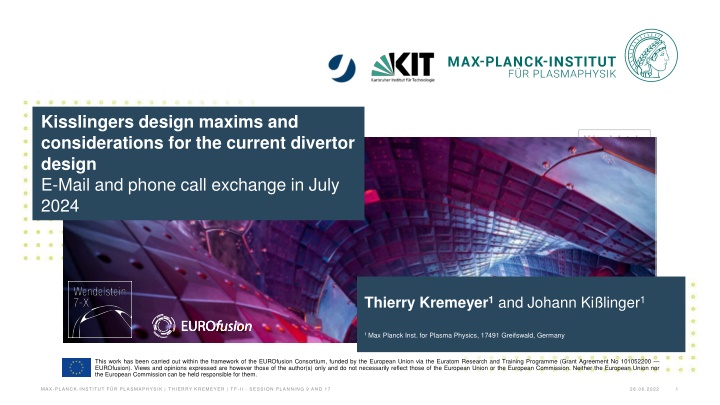
Design Maxims and Considerations for Current Divertor Design at Max-Planck-Institut für Plasmaphysik
Explore the design maxims and considerations for the current divertor design discussed in an exchange between Thierry Kremeyer and Johann Kilinger at the Max-Planck-Institut für Plasmaphysik in July 2024. The conversation delves into design constraints, goals, and the island divertor approach for projects like W7-AS and W7-X, shedding light on key aspects of plasma physics research and development.
Download Presentation

Please find below an Image/Link to download the presentation.
The content on the website is provided AS IS for your information and personal use only. It may not be sold, licensed, or shared on other websites without obtaining consent from the author. If you encounter any issues during the download, it is possible that the publisher has removed the file from their server.
You are allowed to download the files provided on this website for personal or commercial use, subject to the condition that they are used lawfully. All files are the property of their respective owners.
The content on the website is provided AS IS for your information and personal use only. It may not be sold, licensed, or shared on other websites without obtaining consent from the author.
E N D
Presentation Transcript
Kisslingers design maxims and considerations for the current divertor design E-Mail and phone call exchange in July 2024 Thierry Kremeyer1and Johann Ki linger1 1 Max Planck Inst. for Plasma Physics, 17491 Greifswald, Germany This work has been carried out within the framework of the EUROfusion Consortium, funded by the European Union via the Euratom Research and Training Programme (Grant Agreement No 101052200 EUROfusion). Views and opinions expressed are however those of the author(s) only and do not necessarily reflect those of the European Union or the European Commission. Neither the European Union nor the European Commission can be held responsible for them. MAX-PLANCK-INSTITUT F R PLASMAPHYSIK | THIERRY KREMEYER | TF -II - SESSION PLANNING 9 AND 17 28.06.2022 1
Design at W7-AS and W7-X Design considerations identical for W7-AS and W7-X Development in parallel, motivated by W7-X, concept tested for W7-AS Less total heating power Differences: Different resonance MAX-PLANCK-INSTITUT F R PLASMAPHYSIK | THIERRY KREMEYER | TF -II - SESSION PLANNING 9 AND 17 28.06.2022 2
W7-X Design constraints and goals Design constraints: Magnetic configuration space - Resonances and island width Control (sweeping) coils added Started with 3 configurations: standard, low iota, high mirror, extended to 11 configurations No beta effects considered, all at 3% No suppression of lower harmonics foreseen: 1/1, 2/2, 3/3, 4/4 islands Vacuum vessel geometry was set. Coils were designed first, then casing, cryostat and ultimately vacuum vessel and pumping ports without divertor considerations taken into account Design goals: Mandatory requirement of heat load survival - Peak load < 10 MW/m - Achieve homogenous power deposition, avoid hot spots and leading edges Island divertor located at widest island close to pumping ports Divertor performance requirements of particle exhaust and impurity retention were explicitly not part of the design considerations! MAX-PLANCK-INSTITUT F R PLASMAPHYSIK | THIERRY KREMEYER | TF -II - SESSION PLANNING 9 AND 17 28.06.2022 3
Island divertor - Kilingers design approach Design goals: Mandatory requirement of heat load survival - Peak load < 10 MW/m - Achieve homogenous power deposition Approach: Maintain stellarator symmetry Not necessary but felt right Shallow incidence angle and maximize wetted area to stay below 10 MW/m Homogenous power deposition, by homogenous incidence angle Design tool: Fieldline diffusion Design baffles without plasma contact Design validation: 2D toroidal average in B2-EIRENE Desired changes: Distance from target to core, design divertor space before designing vacuum vessel Reduce magnetic configuration space MAX-PLANCK-INSTITUT F R PLASMAPHYSIK | THIERRY KREMEYER | TF -II - SESSION PLANNING 9 AND 17 28.06.2022 4
Island divertor - abolished ideas Bend in target to direct neutrals: Slitted targets: No documentation found, drawn based on Ki lingers description Design proposal W7-X preferential support phase I, abolished for phase II Reason: Technical complexity was seen as too large, not justifiable as particle exhaust was not a goal Reason: Worry about leading edges, solution would have increased size significantly for same surface load MAX-PLANCK-INSTITUT F R PLASMAPHYSIK | THIERRY KREMEYER | TF -II - SESSION PLANNING 9 AND 17 28.06.2022 5
Chaotic approach by Erika Strumberger Erika Strumberger started with a choatic divertor design at a later stage Due to later start, concept underdeveloped at decision point Focus on tool development, no buildable hardware taken into accound Validation with MFBE, now known as VMEC Extender Erika Strumberger was put in charge to validated Ki lingers Design According to Ki linger, no hard feelings. Strumbergers abandoning of Wendelstein divertor due to prefered location in Munich (confirmation by Strumberger pending) Source: C.D. Beidler et al 2001 Nucl. Fusion 41 1759 [https://iopscience.iop.org/article/10.1088/0029-5515/41/12/303/meta] MAX-PLANCK-INSTITUT F R PLASMAPHYSIK | THIERRY KREMEYER | TF -II - SESSION PLANNING 9 AND 17 28.06.2022 6















